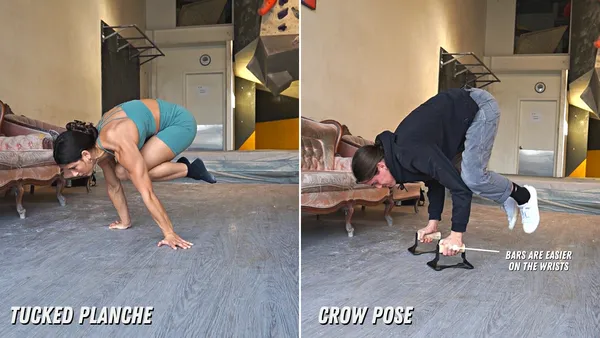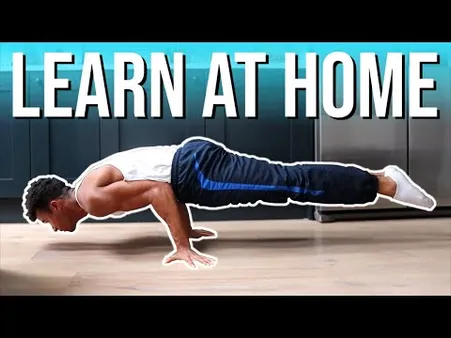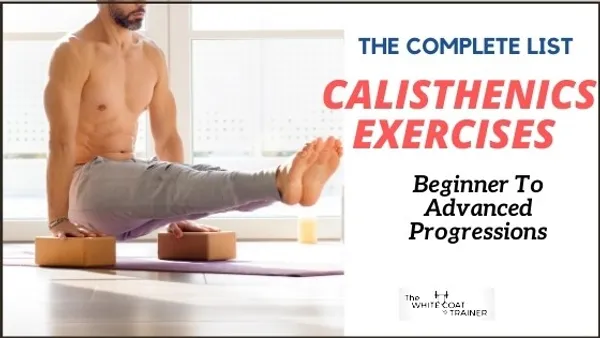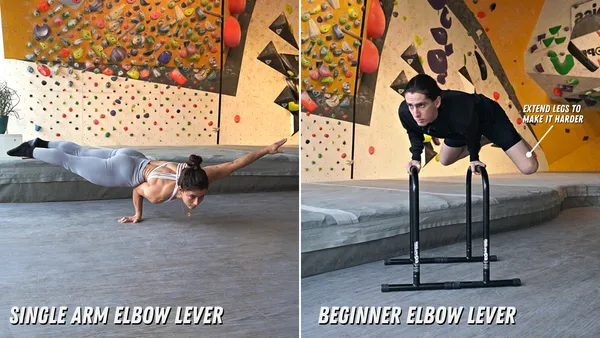Table of Contents
Master the art of bodyweight training with Kizworld's comprehensive guide to calisthenics. Discover How to learn the basic calisthenics skills and progressions, unlocking your fitness potential and achieving your goals. From pull-ups and push-ups to squats, lunges, and planks, we'll guide you through each exercise, providing tips and techniques to help you progress safely and effectively.
How to Learn the Basic Calisthenics Skills and Progressions
I. Calisthenics Skills and Progressions: A Comprehensive Guide
Calisthenics Skills and Progressions: A Comprehensive Guide
Calisthenics, the art of bodyweight training, is a holistic approach to fitness, combining strength, flexibility, and coordination. Calisthenics exercises can be done anywhere, anytime, making them a convenient and accessible way to stay fit. As you progress in your calisthenics journey, you'll unlock a wide range of skills and progressions that will challenge you and help you reach your fitness goals.
Basic Calisthenics Skills
Before you embark on more advanced calisthenics movements, it's essential to master the basics. These foundational skills will provide a solid foundation for your calisthenics practice and help you progress safely.
- Pull-Ups: This classic calisthenics exercise targets your back, arms, and shoulders. Hang from a bar with your palms facing away from you and pull yourself up until your chin is above the bar. For a more challenging variation, try the One-Arm Pull-Up.
- Push-Ups: Push-ups are a fundamental bodyweight exercise that works your chest, triceps, and shoulders. Start in a plank position with your hands shoulder-width apart and lower your body until your chest almost touches the ground. Then, push back up to the starting position. To step up the challenge, incorporate the Push-Up to Handstand.
- Squats: Squats are a lower body exercise that targets your thighs, glutes, and core. Stand with your feet shoulder-width apart and lower your body as if sitting back into a chair. Keep your chest up and your knees aligned with your toes. Return to the starting position by extending your legs. Consider the Squat Jump for a dynamic variation.
- Lunges: Lunges are a unilateral exercise that works your legs, hips, and glutes. Step forward with one leg and bend both knees, lowering your body until your rear knee is close to the ground. Push off with your front leg to return to the starting position. For a more challenging variation, try the Walking Lunge.
- Plank: The plank is an isometric core exercise that targets your abs, obliques, and lower back. Start in a push-up position with your forearms on the ground and your body in a straight line from head to heels. Hold this position for as long as possible.
Exercise | Sets | Reps | Rest |
Pull-Ups | 3 | 8-12 | 60 seconds |
Push-Ups | 3 | 10-15 | 60 seconds |
Squats | 3 | 12-15 | 60 seconds |
Lunges | 3 | 10-12 per leg | 60 seconds |
Plank | 3 | 30-60 seconds hold | 60 seconds |
Calisthenics Progressions
As you become more comfortable with the basic calisthenics skills, you can start to progress to more challenging variations and combinations. These progressions will help you build strength, power, and control while keeping your workouts interesting and challenging.
- Beginner Progressions: Once you've mastered the basic calisthenics skills, you can progress to more challenging variations. For example, instead of regular push-ups, try the Push-Up with Feet Elevated or the Pike Push-Up. Similarly, progress from regular pull-ups to Single-Leg Pull-Ups or Muscle-Ups.
- Intermediate Progressions: As you continue to build strength and skill, you can tackle intermediate progressions. These exercises require more coordination, balance, and strength. Some examples include the Handstand Push-Up, Planche, and Front Lever. Check out the Handstand Push-Up Progression Guide for detailed instructions.
- Advanced Progressions: For those seeking the ultimate calisthenics challenge, there are advanced progressions that will test your limits. These exercises require years of dedicated training and practice. Some examples include the One-Arm Handstand Push-Up, Full Planche, and Human Flag.
Tips for Learning Calisthenics
- Start Slowly: Don't rush into advanced progressions. Start with the basics and gradually work your way up as you gain strength and skill. Trying to do too much too soon can lead to injury.
- Be Consistent: Regular practice is key to progress in calisthenics. Aim to train at least three times per week, focusing on different muscle groups each session. Consistency is the key to making lasting progress.
- Listen to Your Body: Pay attention to your body's signals. If you feel pain, stop the exercise and rest. Pushing yourself through pain can lead to injury. Listen to your body and take breaks when you need them.
- Have Fun: Calisthenics should be enjoyable. If you're not having fun, you're less likely to stick with it. Find exercises that you enjoy and challenge yourself in ways that are fun and motivating.
II. Mastering the Fundamentals: Building a Solid Foundation
Mastering the Fundamentals: Building a Solid Foundation
Calisthenics, a form of bodyweight training, offers a holistic approach to fitness, combining strength, flexibility, and coordination. Embark on a transformative journey as we delve into the fundamental calisthenics skills and progressions, empowering you to unlock your physical potential. Whether you're a beginner seeking to establish a solid foundation or an experienced athlete looking to elevate your skills, this comprehensive guide will equip you with the knowledge and techniques to excel in calisthenics.
To lay a strong foundation in calisthenics, it's crucial to master the basic skills that serve as building blocks for more advanced movements. These fundamental skills include pull-ups, push-ups, squats, lunges, and planks. Each exercise targets specific muscle groups and movement patterns, contributing to overall strength, endurance, and coordination.
- Pull-Ups: Engage your back, arms, and core to lift your body up towards a bar, developing upper body strength and grip strength.
- Push-Ups: Strengthen your chest, triceps, and shoulders by pushing your body up and down from a plank position, emphasizing core stability.
- Squats: Target your lower body, including your quads, glutes, and hamstrings, by lowering and raising your body while keeping your back straight.
- Lunges: Work your quads, glutes, and hamstrings unilaterally by stepping forward and lowering your body, promoting balance and coordination.
- Plank: Engage your core, shoulders, and back by holding a position with your body parallel to the ground, supported by your forearms or hands.
As you gain proficiency in these basic skills, you can progress to more challenging variations and combinations. Calisthenics progressions involve gradually increasing the difficulty of exercises by modifying the movement, range of motion, or intensity. This systematic approach allows you to continually challenge yourself and make steady progress.
For beginners, it's essential to start slowly and focus on proper form to avoid injuries. Gradually increase the frequency and intensity of your workouts as you build strength and endurance. Remember to listen to your body and take rest days when needed. Most importantly, have fun and enjoy the process of improving your fitness through calisthenics.
| Skill | Beginner Progression | Intermediate Progression | Advanced Progression |
Pull-Ups | Assisted Pull-Ups | Negative Pull-Ups | One-Arm Pull-Ups |
Push-Ups | Incline Push-Ups | Decline Push-Ups | Handstand Push-Ups |
Squats | Bodyweight Squats | Weighted Squats | Pistol Squats |
Lunges | Bodyweight Lunges | Weighted Lunges | Bulgarian Split Squats |
Plank | Basic Plank | Side Plank | Dragon Flag |
Calisthenics offers a versatile and accessible way to achieve your fitness goals. With dedication and consistency, you can unlock your full potential and enjoy the numerous benefits of calisthenics, including improved strength, flexibility, and coordination. Embrace the challenge and embark on a journey of self-improvement through the world of calisthenics.
To further enhance your calisthenics journey, consider incorporating these additional tips into your routine:
- Start Slowly: Begin with basic exercises and gradually increase the difficulty as you progress.
- Be Consistent: Regular practice is key to making progress and achieving your fitness goals.
- Listen to Your Body: Pay attention to your body's signals and take rest days when needed to prevent injuries.
- Have Fun: Enjoy the process of learning and improving your skills, making calisthenics a part of your active lifestyle.
Remember, calisthenics is a journey, not a destination. Embrace the challenges, celebrate your achievements, and continue to push your limits. With perseverance and dedication, you can unlock your full potential and achieve your fitness aspirations through the power of calisthenics.
To further enhance your calisthenics knowledge and skills, explore our related posts on how to do a handstand, the benefits of gymnastics for kids, and the best gymnastics equipment for home use.
III. Conquering Intermediate Skills: Advancing Your Calisthenics Journey
Conquering Intermediate Skills: Advancing Your Calisthenics Journey
Surpassing calisthenics beginner skills is a natural progression that opens up exciting new possibilities. As you gain confidence and strength, it is time to embark on intermediate skills that will challenge your limits and further develop your physical prowess. These intermediate skills not only enhance your overall fitness but also introduce variations and complexities to your workout routine.
Remember, consistency is key. Stay dedicated to your practice and gradually incorporate these skills into your routine. With patience, persistence, and a positive mindset, you will conquer these intermediate skills and unlock new horizons in your calisthenics journey. Ready yourself for the challenges and rewards that await you as you advance your skills.
IV. Muscle-Ups: Mastering the Fusion of Strength and Technique
Key Points: Mastering Muscle-Ups |
|---|
Develop Upper Body Strength: Focus on exercises that target back, shoulders, and arms. Try the Pull-Up Variations: Mastering Different Grips for Maximum Gains . |
Perfect Bar Hang: Hold onto the bar for an extended period, building grip strength and endurance. You will find core workout tips in The 5-Minute Plank Challenge: Building a Strong Core link. |
Transition and Pull: Learn the technique of transitioning from a dead hang to a pull-up position, then engage your back and arms to pull yourself over the bar. |
Maintain Control: Throughout the movement, concentrate on maintaining control and avoiding kipping, using momentum to gain height. |
Muscle-ups epitomize intermediate calisthenics, demanding a blend of strength and technique. The transition from a dead hang to a pull-up position, followed by the explosive pull-over, challenges your entire upper body. This dynamic exercise improves pulling strength and coordination. As you progress, aim to increase the number of muscle-ups you can perform in a set.
Begin by strengthening your upper body with exercises targeting your back, shoulders, and arms. Engage in pull-up variations, focusing on different grips, to build the foundation for muscle-ups. Practice holding a bar hang for an extended duration to enhance your grip strength and endurance.
V. Handstand Push-Ups: A Test of Balance and Strength
- Develop Shoulder and Core Strength: Strengthen your shoulders with exercises like Pike Push-Ups: Building a Strong Foundation for Handstand Push-Ups.
- Master Basic Handstand: Learn the technique of holding a stable handstand against a wall or with assistance from a spotter.
- Control and Form: Focus on maintaining a straight body line and avoid arching your back during the movement.
- Start with Wall Assistance: Practice handstand push-ups against a wall for support, gradually reducing the amount of assistance as you progress.
Handstand push-ups elevate the difficulty of regular push-ups, requiring balance, strength, and coordination. With your body inverted, the movement engages your entire body, particularly your shoulders, triceps, and core. Begin by developing shoulder and core strength through exercises like pike push-ups. Master the basic handstand against a wall or with assistance, then gradually transition to free-standing handstand push-ups.
Additional Resources:
- Know the Calisthenics Progression Guide: From Beginner to Advanced
- A Calisthenics Workout Routine for Intermediate Level Athletes
- Common Calisthenics Mistakes and How to Avoid Them
VI. Reaching Advanced Levels: Achieving Calisthenics Mastery
Reaching Advanced Levels: Achieving Calisthenics Mastery
Conquering the advanced tiers of calisthenics unfolds a realm of unparalleled physical accomplishment, demanding both unwavering dedication and a refined technique. This evolutionary leap necessitates a meticulous approach, emphasizing controlled movements, refined form, and a progressive mindset. Embrace the challenge, and witness your calisthenics prowess soar to new heights.
Evolve your calisthenics practice with intermediate progressions, pushing boundaries and unlocking new milestones. Discover the nuances of muscle-ups, pistol squats, and planche variations. Each progression presents a unique challenge, fostering growth, strength, and coordination. Approach these progressions with patience, focus, and a willingness to persevere.
Intermediate Progression | Benefits |
|---|---|
Muscle-Ups | Full-body strength, upper body power, coordination |
Pistol Squats | Lower body strength, balance, flexibility |
Planche Variations | Upper body strength, core stability, shoulder mobility |
To reach the pinnacle of calisthenics mastery, delve into advanced progressions that test the limits of human strength and control. Explore the complexities of one-arm pull-ups, planche push-ups, and human flags. These feats demand years of dedicated training and unwavering focus. They represent the ultimate expressions of calisthenics prowess.
Join the ranks of calisthenics virtuosos by adhering to these fundamental principles. Above all, prioritize impeccable form, for it is the bedrock of safe and effective training. Technique is paramount; execute each movement with precision and control, ensuring optimal muscle engagement and minimizing the risk of injury.
Consistency is the cornerstone of progress. Establish a regular training schedule, and stick to it with unwavering determination. Embrace the challenges that arise, and view them as opportunities for growth. Be patient, for mastery takes time and dedication. Embrace the journey, and relish each milestone along the way.
Fuel your calisthenics journey with adequate nutrition, providing the energy and building blocks your body needs to thrive. Prioritize whole, nutrient-rich foods that support recovery and muscle growth. Stay adequately hydrated to optimize performance and overall health.
Consult a qualified healthcare professional or physical therapist to address any pre-existing conditions or injuries that may impact your calisthenics training. Their ise can help you tailor your routine, ensuring a safe and effective path to progress.
Surround yourself with a supportive community of like-minded individuals who share your passion for calisthenics. Find training partners who inspire and encourage you, pushing you to new heights. Engage with online forums and social media groups to connect with fellow enthusiasts, share experiences, and seek advice.
Remember, calisthenics is a lifelong pursuit, a journey of continuous improvement and self-discovery. Embrace the process, celebrate your achievements, and never cease to explore the limitless possibilities of the human body.
VII. Conclusion
Calisthenics, with its emphasis on bodyweight exercises, stands as a testament to the boundless possibilities of physical achievement. Through dedication, consistency, and a willingness to challenge oneself, you can transform your body into a symphony of strength, agility, and grace. Remember, the journey to calisthenics mastery is an ongoing one, filled with triumphs and setbacks. Embrace the process, celebrate your milestones, and never cease to explore the limits of your physical potential. With kizworld as your guide, unlock the world of calisthenics and embark on a transformative journey towards a healthier, stronger, and more fulfilling life.